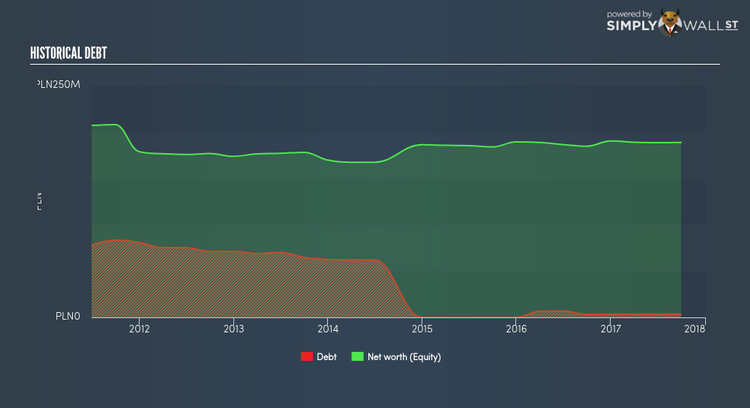Is Alta SA.’s (WSE:AAT) Balance Sheet A Threat To Its Future?

While small-cap stocks, such as Alta SA. (WSE:AAT) with its market cap of ZŁ42.29M, are popular for their explosive growth, investors should also be aware of their balance sheet to judge whether the company can survive a downturn. Assessing first and foremost the financial health is crucial, since poor capital management may bring about bankruptcies, which occur at a higher rate for small-caps. Here are a few basic checks that are good enough to have a broad overview of the company’s financial strength. However, since I only look at basic financial figures, I recommend you dig deeper yourself into AAT here.
Does AAT generate enough cash through operations?
AAT has increased its debt level by about ZŁ3.34M over the last 12 months , which is mainly comprised of near term debt. With this growth in debt, AAT currently has ZŁ37.00K remaining in cash and short-term investments , ready to deploy into the business. Moving onto cash from operations, its trivial cash flows from operations make the cash-to-debt ratio less useful to us, though these low levels of cash means that operational efficiency is worth a look. As the purpose of this article is a high-level overview, I won’t be looking at this today, but you can take a look at some of AAT’s operating efficiency ratios such as ROA here.
Does AAT’s liquid assets cover its short-term commitments?
Looking at AAT’s most recent ZŁ4.13M liabilities, the company has not been able to meet these commitments with a current assets level of ZŁ1.94M, leading to a 0.47x current account ratio. which is under the appropriate industry ratio of 3x.
Does AAT face the risk of succumbing to its debt-load?
With debt at 1.83% of equity, AAT may be thought of as having low leverage. This range is considered safe as AAT is not taking on too much debt obligation, which can be restrictive and risky for equity-holders. We can check to see whether AAT is able to meet its debt obligations by looking at the net interest coverage ratio. A company generating earnings before interest and tax (EBIT) at least three times its net interest payments is considered financially sound. In AAT’s, case, the ratio of 1.65x suggests that interest is not strongly covered, which means that lenders may be more reluctant to lend out more funding as AAT’s low interest coverage already puts the company at higher risk of default.
Next Steps:
AAT’s low debt is also met with low coverage. This indicates room for improvement as its cash flow covers less than a quarter of its borrowings, which means its operating efficiency could be better. In addition to this, its lack of liquidity raises questions over current asset management practices for the small-cap. This is only a rough assessment of financial health, and I’m sure AAT has company-specific issues impacting its capital structure decisions. I suggest you continue to research Alta to get a more holistic view of the stock by looking at:
1. Valuation: What is AAT worth today? Is the stock undervalued, even when its growth outlook is factored into its intrinsic value? The intrinsic value infographic in our free research report helps visualize whether AAT is currently mispriced by the market.
2. Historical Performance: What has AAT’s returns been like over the past? Go into more detail in the past track record analysis and take a look at the free visual representations of our analysis for more clarity.
3. Other High-Performing Stocks: Are there other stocks that provide better prospects with proven track records? Explore our free list of these great stocks here.
To help readers see pass the short term volatility of the financial market, we aim to bring you a long-term focused research analysis purely driven by fundamental data. Note that our analysis does not factor in the latest price sensitive company announcements.
The author is an independent contributor and at the time of publication had no position in the stocks mentioned.

